
Can you eat ants? Could ants save your life? Read what you need to know!
👉 The key facts from this guide
- Ants are edible and contain useful nutrients such as protein, fat, and minerals.
- Before you eat ants, you should boil them to kill bacteria, parasites, and viruses.
- Avoid eating dead ants and those found near cities, as they may be contaminated with poison.
- Be careful when catching ants as they can bite and release poison.
- Ant trails can help you find an ant colony that you can use as a food source.
- Always treat ants with respect, as they are living beings.
Ants can be found almost everywhere, and when you come across them, they are usually in large colonies.
This raises the question for us survival enthusiasts:
Can I eat ants without hesitation?
Ants may not be your first choice, but when it comes to life and death, you'll be grateful for this option. Ants contain a lot of protein and other important nutrients that are crucial in a survival situation.
The protein content per 100 grams is often higher than that of our conventional cooked eggs.
Indigenous peoples also recognized this superfood as a food source and have been eating ants for several centuries.
It is advisable to keep this food option in mind. A resource-poor place can turn out to be a true feast.
However, before you recklessly reach into the next ant hill, you should read the following guide carefully.
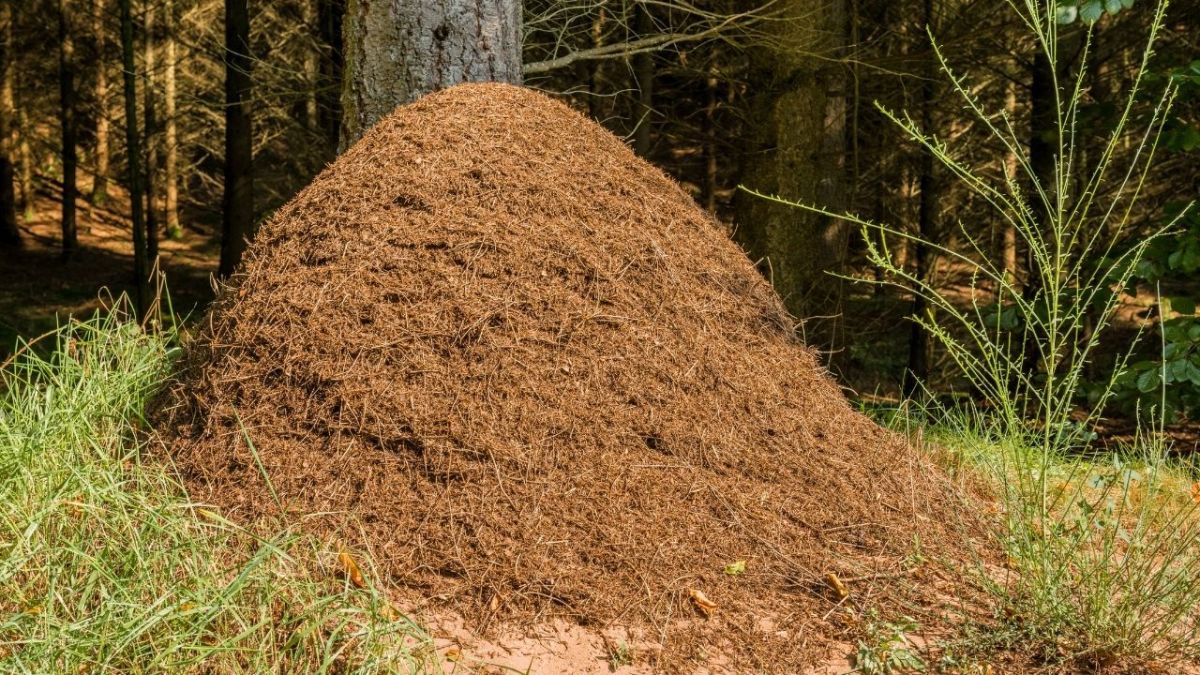
History: Ants were eaten earlier
Ants were collected as a snack by indigenous peoples from North America. The ants were considered a delicacy and luxury because of their sour taste. Additionally, ants mixed with other insects were offered as a dessert.
However, it has also been documented that the insects were used as survival food for difficult times in certain tribes. That's precisely what we're looking for here! The insects were typically roasted beforehand to preserve them for later use.
Which species of ants were consumed in North America is not known. It can be assumed that various species of pavement ants were on the menu.
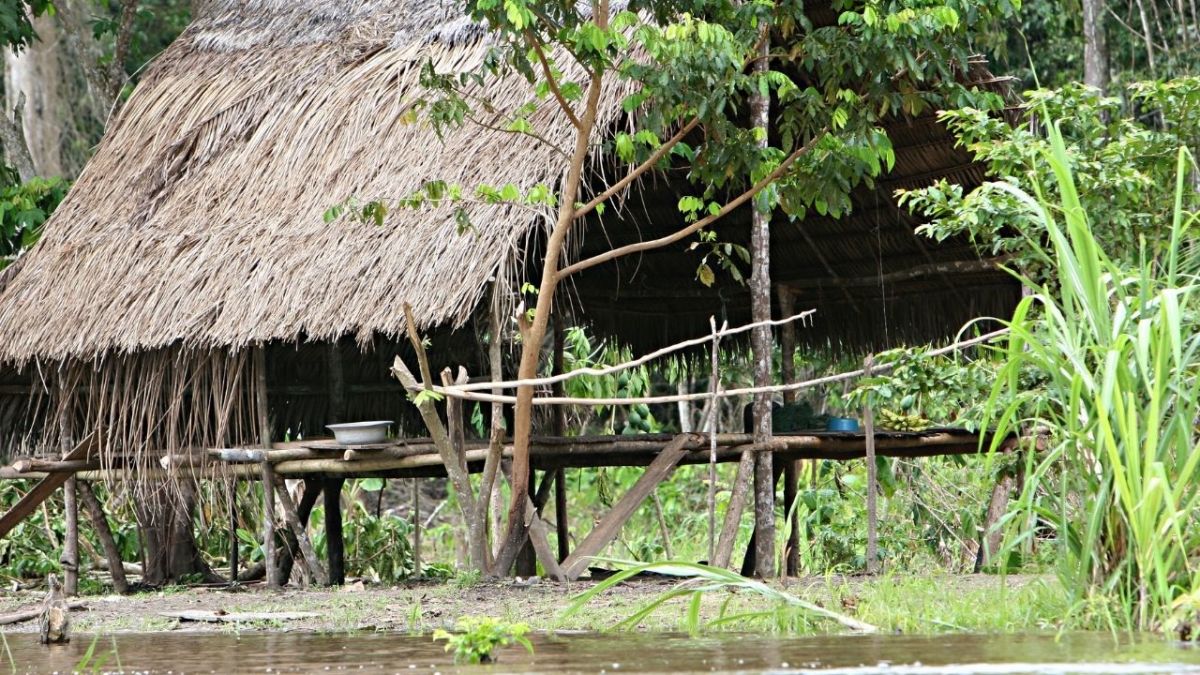
Due to the high availability of ants, we can assume that ants were not only used in indigenous cultures in North America.
Ants are at home on all continents (except for Antarctica) and can even be found all year round. In winter, it requires a bit more practice to track them down, but in the warmer months it is almost impossible not to discover ants in the wilderness.
Nutritional value and taste of ants
100 grams of ants contain about 14 grams of protein and 5.6 milligrams of iron. Other essential nutrients such as fats, calcium, and fiber are also present.
Keep in mind the weight of a single ant. Depending on the species, between 300 and 400 ants weigh one gram.
In terms of taste, ants are sour, tangy, and can even have citrus notes.
This can be attributed to the formic acid that occurs naturally in the animal. The acid can be neutralized by cooking. The taste always depends on the species and preparation.
In Colombia, leaf cutter ants are even said to have an aphrodisiac effect. Here, the animal is also presented as a wedding gift in certain circles.
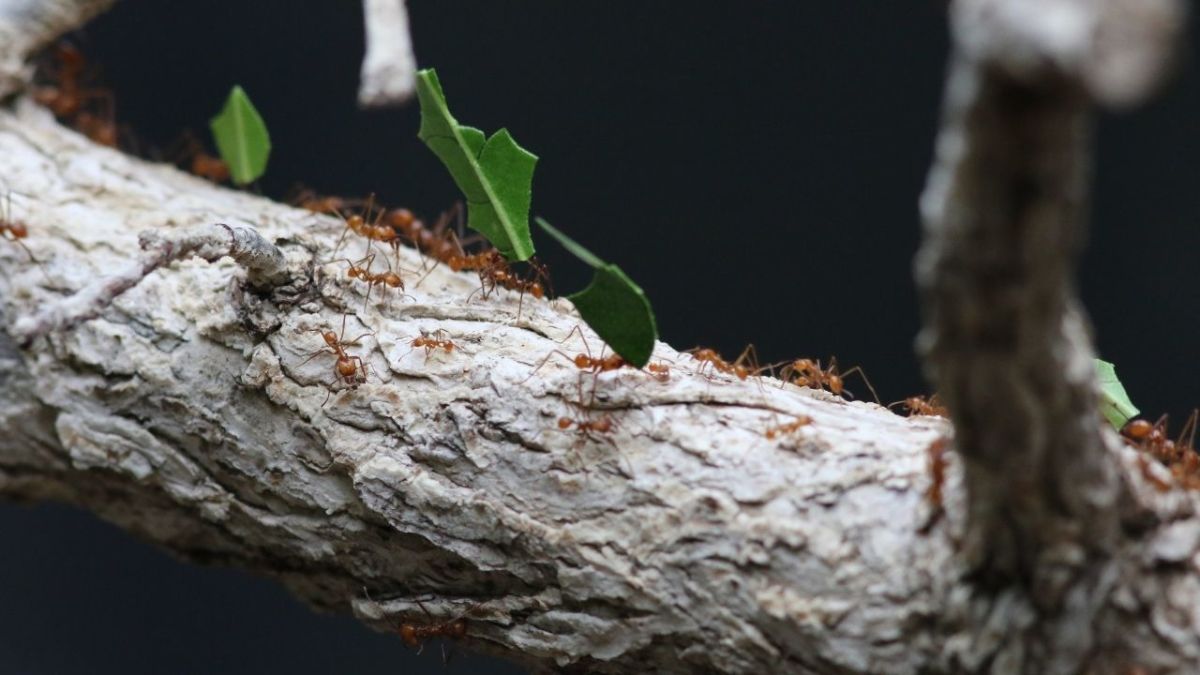
Where can I find these delicacies?
As mentioned above, you can find ants almost everywhere. Unless you're in Antarctica, your chances of feeding on ants are good.
Move through the terrain and keep an eye on the ground. Can you see individual ants or even an ant trail?
Ant trails are paths formed by ants when they run in an orderly line from their nest to a food source and back. These trails are formed because ants leave pheromones to show their fellow ants the way to the food.
If an ant successfully finds food, it returns to the nest, leaving behind a pheromone trail. Other ants follow this trail and reinforce it by leaving their pheromones, creating the ant trail.
So, an ant trail is a good sign. The best thing to do now is to follow the ants that are carrying something. The chances of success are highest here, as this ant is likely to lead back to the colony.
You will easily recognize the colony. There will be a lot of activity there and if there is no hill, at least there will be holes. The ants will disappear there and reappear on the surface.
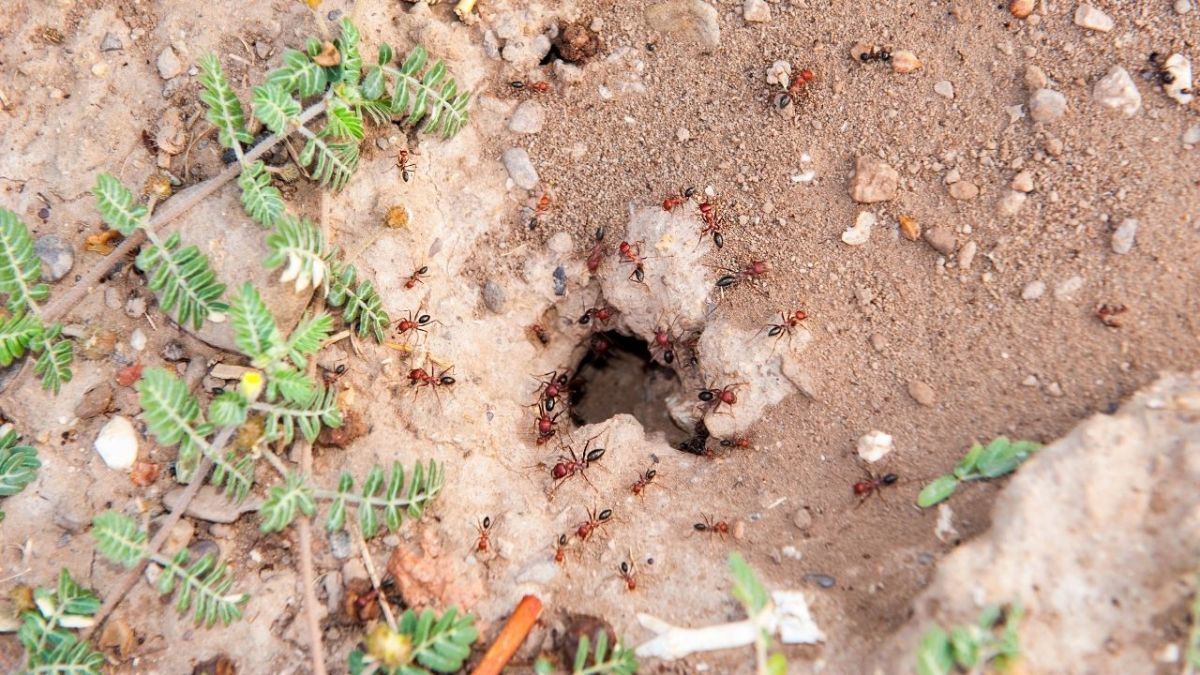
At least several hundred ants live here. If it is a super colony, several million animals can live here. Like in a big city!
You can practice searching for an ant colony on your next visit to the forest. This also trains your mindfulness, and it is a pleasure to watch the ants in their daily activities.
Additionally, I ask that you do not poke around in ant hills just to experiment. This puts the ant colony under extreme stress. If you injure or kill the queen of the colony, it can have serious consequences for the survival of the entire colony. This guide is only intended to support you in a survival situation and to ensure your survival in case of emergency. In this case, your health comes before that of the ant colony.
Catching ants
Now it's time to collect the six-legged creatures. To achieve this, you need to attract the attention of the colony and disrupt the ants' daily routine.
Ideally, you use a stick and poke it into one of the holes. Start with one hole and see what happens.
The inhabitants will try to attack the intruder, in this case the stick. This is your chance to put the ants into a container you have prepared.
Repeat this process until you have enough food. In an emergency, you can also dig into the colony and harvest the eggs of the ants. These are also edible and provide you with plenty of nutrients.
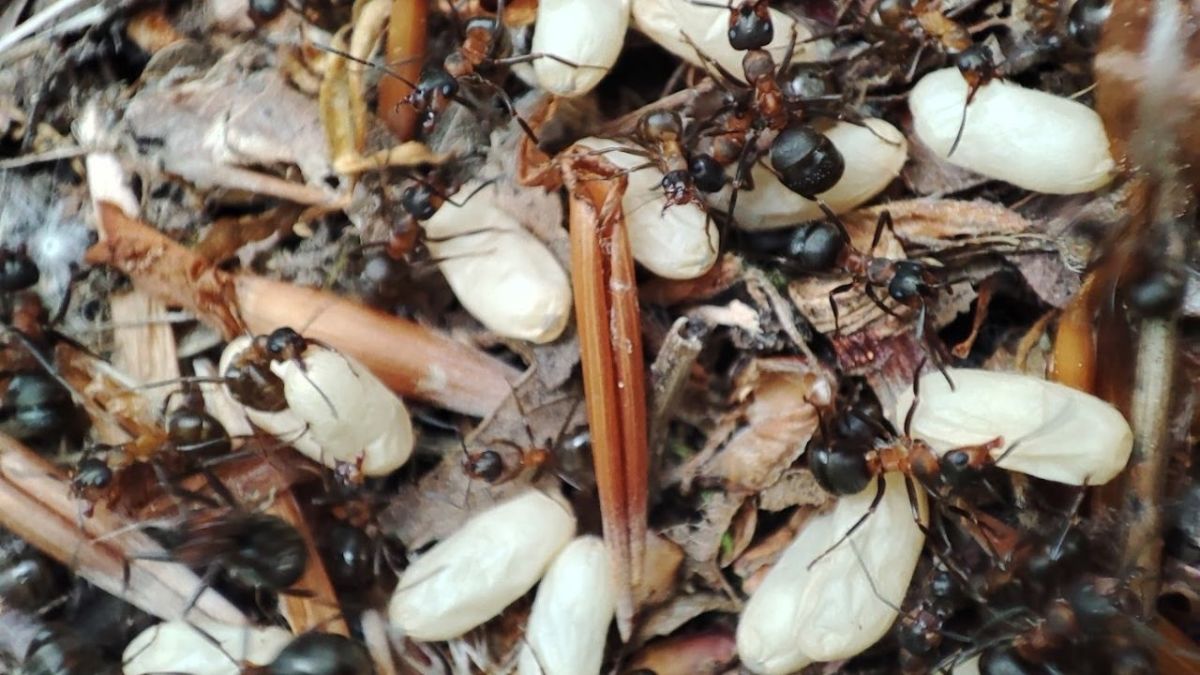
Be cautious when catching and eating
If you enter the territory of an ant colony and disturb them in their peace, you should prepare for ready-to-fight attackers.
Ants can bite and in most cases also release venom. This can be a slight sting with some species, but can also be quite painful and leave a reminder of the meeting for several days. I speak from experience!
Therefore, the first tip: Don't choose ants known for aggression!
In Germany, you won't come across seriously dangerous ants, but you should avoid the red wood ant when foraging for food.
This species is far more aggressive and possesses a poison gland. It sprays the poison onto the bite wound, causing it to swell.
Quick anecdote: Wood ants can even drag smaller mammals, such as a mouse, to their nest.
If you're unsure which species of ant it is, trust your senses.
Striking coloration or a pungent odor should be interpreted as warning signals. If you're not on the brink of starvation, it's better to leave that colony alone.
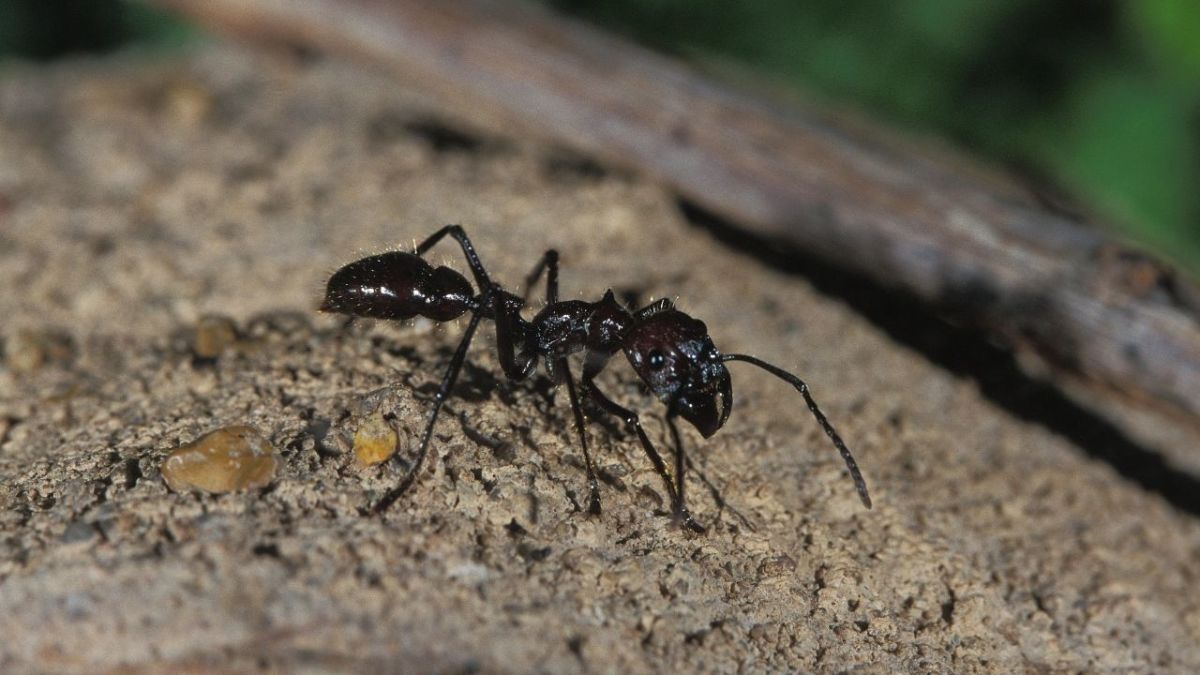
Next, I advise against eating already dead ants. It is unclear to you why or how long the insects have been dead. Collect only live ants to avoid any risks.
You should also avoid ants near cities. In a survival situation, you'll likely be in the deep wilderness, but caution is always better than regret.
Ants near cities are often exposed to pesticides due to their pest status. The ants could be contaminated accordingly. Even boiling won't help. Therefore, pay attention to your surroundings when gathering.
Finally, I would like to point out potential allergic reactions: Depending on your shellfish, dust mite, or even chocolate allergies, you could react to insects with corresponding symptoms.
If you still want to take the risk, you should definitely cook your yield. Like all food, ants can cause allergies, which, in the worst case, can quickly end your survival adventure.
Eating Ants Raw or Cooked?
I clearly recommend boiling ants beforehand. Anything meaty, like fish or insects, should ALWAYS be boiled!
You can eat ants raw, but on one hand the intense taste is somewhat muted by the cooking process. On the other hand, and much more importantly, it kills bacteria, parasites and viruses in and on the ant.
In contrast, the high nutrient content is preserved when consumed raw. Therefore, you should be careful when cooking. The ants are tiny and do not really need long cooking or roasting times.
In any case, I would advise against consuming live ants. In the worst case, ants can bite you on the way to the stomach, and a swollen bite in your neck area is by no means pleasant.
As always with survival: Never take a risk!
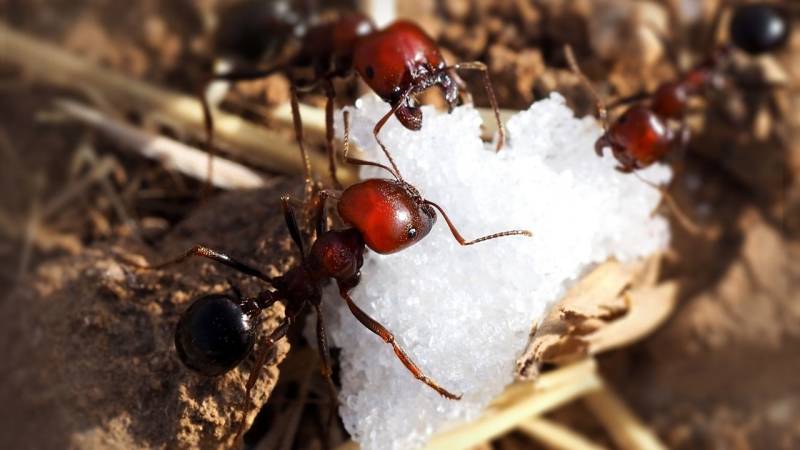
Survivors' Stories
- The story is told of a 62-year-old Australian who became stranded in the Outback without water after suffering a heart attack. He survived by eating ants as emergency food and was rescued after a week. The minimal amount of fluid in the ants saved his life.
- Another story is told about a pilot in World War II who was shot down and broke both legs in the crash. He survived only because he was able to dig up a frozen ant hill and eat the ants. He crawled to the nearest village and received medical help there.
Conclusion: Ants are Edible
As you can see, ants are a great backup plan. Due to their widespread distribution and abundance, you can find them almost anywhere.
Ants are actually edible and contain useful nutrients such as protein, fat, and minerals.
In some cultures, ants are even considered a delicacy. For example, in Colombia, hormigas culonas ("big-bottomed ants") are consumed as a snack, and in Australia, honey pot ants are popular among indigenous people as a sweet treat.
Perhaps you'll develop a taste for them, too. While you can consume them raw, if you plan to eat a large amount, it's best to cook them to kill any unwanted passengers.
Be careful when handling these small creatures, as a misstep could turn your leg into a target. Additionally, it's important to remember that ants are living beings and should always be treated with respect.
The more you acquire this kind of knowledge, the more secure you'll feel in the wilderness and the more calmly you'll be able to react in extreme situations.

Sources for the guide
1. Skinner A: The use of insects and other invertebrates as food by the North American Indians Journal of the New York Entomological Society 1910, 18: 264-267. (https://www.jstor.org/stable/25003432?seq=2)
2. https://survivalfreedom.com/can-you-eat-ants-for-survival-taste-and-nutrition/
3. https://www.survivalsullivan.com/are-ants-edible/
4. https://www.helpster.de/beissen-ameisen-das-hilft-bei-bissen_84195
5. https://de.wikipedia.org/wiki/Rote_Gartenameise

Author of the guide
Martin Gebhardt
Hey, I'm Martin. On my blog, you will learn the basics and numerous details about living in the wild. I think survival, bushcraft and the good life in nature are the keys to happiness. Find me here on Instagram or on YouTube. You can find more about my mission on the About Me page.
Was this guide helpful?
24 people found this guide helpful.
5.00 out of 5 points (24 Ratings)
Comments (0)
This post may contain affiliate links. So if you click on the links and make a purchase, I will receive a small commission at no additional cost to you. Click here, to learn more about it.


